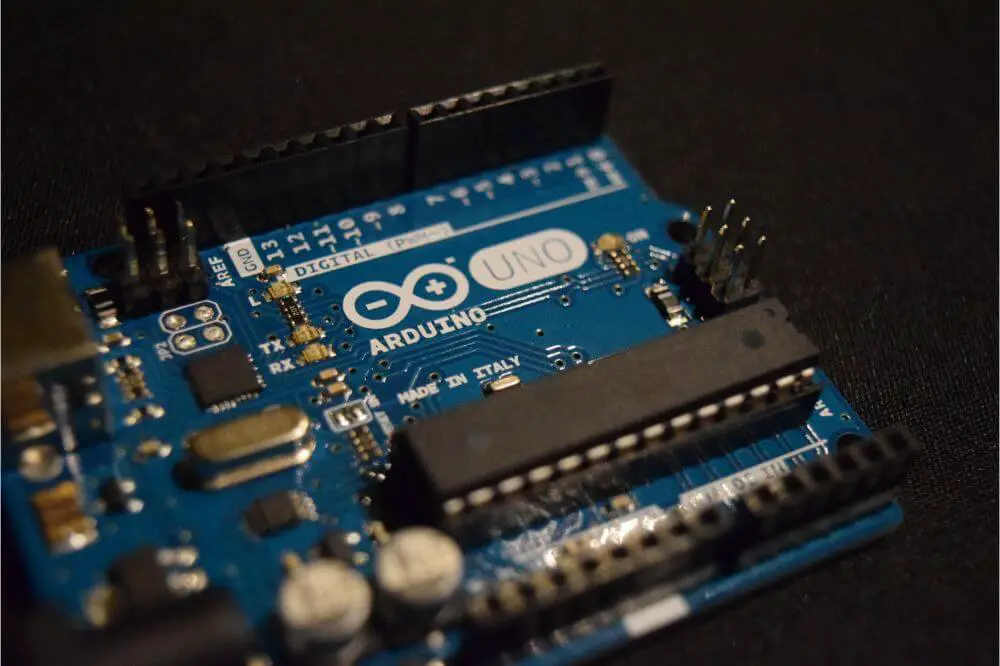The Arduino Uno Board comes in real-time. This board is a single microcontroller and is used to make applications easier to access. This will help with interactive objects and things that surround them. The hardware in this program has an open-source board and they come with an 8 bit Atmel AVR microcontroller or even a 32 bit Atmel ARM.
The current model of the Arduino Uno Board has a USB interface and 6 analog input pins. There are also 14 digital I/O pins and will allow the user to attach this thing to other extension boards.
More About the Arduino Uno
This board is microcontroller-based and it is part of the ATmega382. There are 14 digital input and output pins which will allow for 6 PWM outputs and there is also a 16 MHz ceramic resonator. This device also has an ICSP header along with a UBS connection. There are 6 analog inputs along with a power jack and a button that can be used to reset the system.
The Arduino Uno has all of the support that is needed to be a complete microcontroller. To get started with this program a person does not need advanced technical knowledge. They will contact it to the UBS controller and there is an AC to DC adaptor or it can be used as part of a battery.
This board is different from other types of boards because it does not have the FTDI service driver chip as part of them. It is part of the Atmega 16U2 which can work on versions up to the R2. It is programmed to work as a USB to serial converter.

Different Types of Arduino Boards
Different types of these boards will work with a third party and other compatible versions. There are some official versions too. There is the Uno R3 and the Nano V3. Both of these boards are using a 16 MHz Atmel Atmega and there is an 8 bit microcontroller. There is also a 32 KB that has a flash and the RAM is 14 digital. There is an I/O and six analogs I/O and there is also a 32 KN that will be quiet when it is running.
The Arduino projects can be used as a stand-alone feature of they can be programmed to communicate with other types of software that is already running on the computer. They can work with the Flash and Processing in addition to the Max/ MSP.
This board is operated by the 16 MHz ceramic resonators and it also has the USB port that can be used for connection, additional power, or additional means of communication. It is easy to add additional memory by adding an SD or an SD card for storage. This will also allow a person to complete bigger tasks using the Arduino Uno.
Stand out features of the Arduino Uno
The Arduino Uno has some great features that a person should be aware of. This will show them the benefits of the board and all it has to offer.
USB
There is an easy USB interface. This will allow it to go with a serial device. There is also a chip on the board that will plug right into the USB port and it will be able to support the computer in addition to a virtual serial port.
This will allow serial communication and there is an easy protocol. There is also a time tested USB connection that will work with the latest computer and will make it easy to use.
Easy Access
There is a microcontroller that is easy to location and this works with the ATmega382 chip. There are additional hardware features such as a timer, an external and an internal interrupt, and there are PWM pins and different sleep modes for this board.
Design
There is an open source design. This will allow many people to use and troubleshoot it without a problem. If there is an issue with a project looking into it will be a lot easier.
Clock
The Arduino Uno comes with a 16 MHz clock. This is fast for the majority of the applications. It will not speed up the microcontroller that will make it easy to use.
Power
While this board is powerful there are some regulation tools that can be needed. There is a tool that will allow a person to manage the power inside. There is also a voltage regulator that is built into this board. This can be powered by the USB port and no additional external power is needed if an external power unit is needed it can hold up to 12 V and it will regulate both the 5V and the 3.3V.
Pins
There are 13 digital pins and there are an additional 6 analog pins. This will allow the hardware to be connected to the Arduino Uno board through external means. these pins are compatible with this system and can be used in real word applications.
They are also easy to use. The electronic device can be plugged in along with the sensors. The sensors can be plugged into the sockets and they will correspond to the pins.
Development and Collection
The Arduino Uno was created back in 2005. It was developed by two engineers from Italy. They were David Curarielles and Massimo Banzi. The goal is to allow a person to learn this program and they will use this program to improve their skills when it comes to using electronic.
They will be able to use this application in the real world. It can be used to help them in many different applications and environments.
These are some of the great features that the Arduino Uno has to offer. While the standard board is great alone and has plenty of input and output there are additional storage and connection features that make this board stand out. This is great for people that are looking for a lot of storage and something useful in their board.


